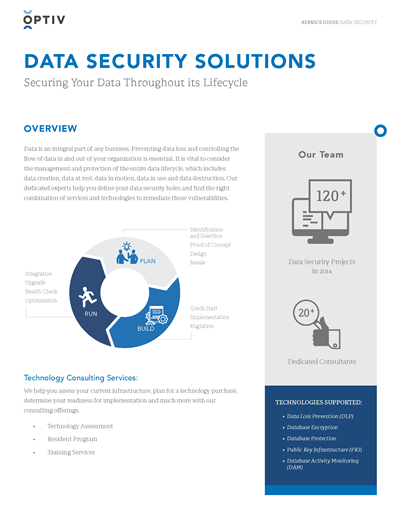Why Data Destruction is a Critical Component of Comprehensive Cyber Security
Why Data Destruction is a Critical Component of Comprehensive Cyber Security
Blog Article
The Vital Nature of Information Damage in Upholding Computer Safety And Security Providers and Protecting Versus Unauthorized Gain Access To
In an age where data breaches and identity burglary are progressively common, the significance of efficient data destruction can not be overemphasized. Numerous techniques, from data wiping to physical damage, offer as crucial safeguards against unauthorized access.
Relevance of Information Damage
In a significantly digital world, the value of data damage can not be overstated. As organizations amass huge quantities of delicate info, the potential effects of failing to effectively manage and dispose of that information end up being progressively serious. Data violations, identity theft, and business espionage posture substantial dangers, highlighting the need of efficient data devastation practices.

In addition, as technology advances, so also do the techniques by which destructive actors seek to manipulate sensitive information. Organizations should stay proactive and attentive in their data devastation strategies to guard against these developing dangers. By focusing on data devastation, business not only secure their assets however additionally foster trust fund among customers and stakeholders, showing a commitment to accountable data management and security practices.
Methods of Effective Data Devastation
To make sure the full and permanent damage of sensitive information, organizations can use a range of effective methods customized to their specific demands. Among one of the most usual methods is information wiping, which includes using specialized software application to overwrite existing information multiple times, making healing virtually difficult. This is especially beneficial for disk drives and solid-state drives, where conventional removal techniques are insufficient.
An additional effective strategy is degaussing, which utilizes solid electromagnetic fields to disrupt the magnetic domains on storage media, providing the data irretrievable. This approach is especially matched for magnetic storage space gadgets, such as disk drive and hard drives.
Physical damage is also a practical alternative, entailing the shredding, crushing, or incineration of storage space devices. This technique warranties that data can not be recouped, making it perfect for organizations dealing with extremely sensitive info.

Compliance With Data Protection Rules
Organizations need to not just concentrate on effective data devastation techniques but also make sure compliance with information security laws that govern how sensitive details is handled and thrown away. Sticking to these guidelines is necessary for maintaining and securing individual data consumer count on. Regulations such as the General Data Security Policy (GDPR) in the European Union and the Medical Insurance Mobility and Accountability Act (HIPAA) in the United States enforce strict standards on information administration, which consist of requirements for the safe and secure disposal of delicate info.
To achieve conformity, companies should execute detailed data devastation policies that align with these legal structures. This consists of recognizing information that requires damage, establishing methods for safe and secure methodsâEUR" such you can try this out as shredding physical media or using software application that fulfills industry criteria for information wipingâEUR" and maintaining thorough records of devastation activities. Regular audits should be conducted to ensure adherence to these policies and to determine any kind of prospective locations for improvement.
Failure to abide by data defense policies can result in considerable lawful implications, including hefty fines and damages to a company's credibility. Incorporating conformity right into data damage techniques is not only a lawful commitment however likewise a vital part of a durable information safety and security approach.
Repercussions of Poor Information Handling
Poor data handling can lead to severe consequences that extend past instant functional setbacks. Organizations might deal with considerable financial losses because of data breaches, which frequently lead to costly remediation initiatives, lawful fees, and regulative penalties. These monetary effects can hinder and stress sources growth, ultimately impacting an organization's profits.
Furthermore, inadequate data handling can drastically damage a company's reputation. Partners, stakeholders, and clients might shed count on an entity that falls short to shield sensitive information, leading to decreased client commitment and possible loss of organization opportunities. This disintegration of trust can take years to reconstruct, if it can be restored in any way.
Furthermore, organizations might face legal implications emerging from non-compliance with information security guidelines. Such offenses may cause investigations and penalties, worsening the monetary concern and further tarnishing the company's picture.
In the realm of cybersecurity, poor information management techniques can develop vulnerabilities that make systems more vulnerable to unauthorized accessibility and cyberattacks. Inevitably, these repercussions emphasize the crucial relevance of executing durable data dealing with procedures to guard delicate information and keep business honesty.
Finest Practices for Secure Information Disposal


Firstly, data ought to be categorized according to its level of sensitivity. Delicate details calls for more rigorous disposal methods, such as shredding physical documents and utilizing sophisticated software application for electronic information cleaning. Utilizing licensed information devastation solutions ensures conformity with sector regulations and requirements.
Second of all, companies need to implement a data review disposal policy that mandates routine audits. This plan needs to outline the procedures for data retention and destruction, making sure that out-of-date information is thrown away without delay and firmly. Educating employees on these protocols is vital to cultivating a culture of protection understanding.
Last but not least, keeping comprehensive Website documents of disposed data enhances responsibility and supplies a clear audit trail. This documents needs to include the kind of information ruined, the method made use of, and the day of disposal.
Conclusion
Embracing robust approaches such as information wiping, degaussing, and physical damage, alongside conformity with policies like GDPR and HIPAA, is important for protecting delicate information. Ignoring correct data disposal techniques can lead to severe repercussions, consisting of information violations and legal consequences.
In a period where information violations and identity theft are increasingly common, the relevance of reliable information destruction can not be overstated. data destruction. Information breaches, identity theft, and business espionage present substantial hazards, emphasizing the necessity of effective data destruction practices
Compliance with regulations such as GDPR and HIPAA mandates that organizations implement strict data security procedures, consisting of the protected devastation of information at the end of its lifecycle.
By focusing on data damage, companies not only protect their assets but additionally foster trust fund amongst stakeholders and customers, showing a dedication to accountable data management and safety methods.
Organizations need to not only focus on reliable information destruction approaches however also make certain compliance with information protection laws that govern how delicate information is taken care of and disposed of.
Report this page